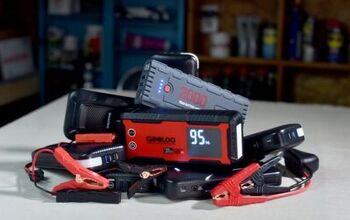Michelin CrossClimate 2 Review: Never Switch To Winter Tires Again
Is it possible that we no longer need to change tires from summer to winter and back again? Well, it's certainly starting to look that way, thanks to the Michelin CrossClimate 2 All-Weather tires. I installed these tires on my car last spring, and the results have been nothing short of remarkable.
Gone are the days of transitioning from winter to summer tires and vice versa. I've driven these tires throughout the summer, and I've now experienced their performance in various weather conditions. It's important to note that these are all-weather tires, not all-season tires. All-weather means they are designed to handle every season, including rain and snow—while no one really knows what all-season means, kind of like all-dressed chips.
Real-World Testing: Exceeding Expectations
In my region, snow tires are recommended, and in some districts close by, they are mandatory when the temperature regularly falls below 20 degrees Fahrenheit. I've driven on these tires in temperatures as low as -25 degrees Fahrenheit, and they have exceeded my expectations. The sidewall of the tires is stamped with the three-peak mountain snowflake symbol, indicating that they meet the U.S. Tire Manufacturers Association (USTMA) and the Rubber Association of Canada (RAC) standards for winter capability.
The Michelin CrossClimate 2 comes with several impressive features:
Tread Pattern: The V-shaped directional tread pattern enhances water evacuation, reducing the risk of hydroplaning and providing excellent traction on snowy surfaces.
Materials: The advanced rubber compound supports flexibility across a range of temperatures, ensuring reliable grip in both hot and cold conditions.
Internal Structure: The internal structure includes a central steel belt surrounded by two-ply polyester, reinforced with polyamide to enhance speed and handling characteristics.
Sipelock 3D Technology: This technology increases grip by enhancing water and moisture sipping in wet or cold conditions, while also providing stable patch contact in dry conditions.
3 PMSF Rating: The Peak Mountain Snow Flake (PMSF) rating shows the tire's capability to perform well in winter conditions.
I must admit that I was initially skeptical about these tires. Living in the snowbelt of Canada, I drive a late model SUV and have always switched tires twice a year. However, these tires came highly recommended by someone I trust. To be safe, I kept my old snow tires just in case, but I haven't needed them.
I've driven on ice, snow, rain, and dry roads, and the Michelin CrossClimate 2 tires have performed exceptionally well in all these conditions. There was no excessive noise on dry roads, and they ran as smoothly as any summer tire I've ever owned. Rain posed no issues, with no spinning on acceleration and excellent braking performance.
Michelin CrossClimate 2 All-Weather Tires
In my area, we average more than 120 inches of snow every winter. I took my car out during a heavy snowstorm to assess the tires' performance, and they handled as well as any snow tire I've ever used. I could accelerate off a light faster and easier than most, and traction control never had to kick in. Braking was also on par with any snow tire I've previously used.
The thought of never having to do the tire switchover again is incredible. The cost savings alone make up for any premium you may pay for these tires, not to mention the convenience of saving time and effort.
Overall, the Michelin CrossClimate 2 is a highly recommended all-weather tire that delivers exceptional performance and reliability throughout the year.
All-Weather vs All-Season
Driving in Canada, especially in the snowbelt region, can be quite challenging due to the extreme weather conditions. Historically, it has been essential for drivers to switch between winter and summer tires to ensure safety and best performance. Winter tires are specifically designed to provide better traction on snow and ice, while summer tires offer superior handling and performance on dry and wet roads during warmer months. The introduction of all-weather tires like the Michelin CrossClimate 2 could be a game-changer in this regard.
The concept of all-weather tires is relatively new, and it aims to provide a single tire solution that can perform well in a wide range of weather conditions. This is particularly beneficial for regions like Canada, where the weather can be unpredictable and the transition between seasons can be abrupt. With the CrossClimate 2 tires, drivers can have peace of mind, knowing that they are equipped to manage anything Mother Nature throws at them.
One of the key features that set the Michelin CrossClimate 2 apart from traditional all-season tires is its V-shaped directional tread pattern. This design is specifically engineered to enhance water evacuation, which reduces the risk of hydroplaning. Hydroplaning occurs when a layer of water builds up between the tires and the road surface, leading to a loss of traction. By efficiently channeling water away from the contact patch, the CrossClimate 2 tires keep a strong grip on the road, even in heavy rain conditions.
What Makes These Tires So Good?
Moreover, the advanced rubber compound used in the construction of these tires ensures that they stay flexible and provide reliable grip in both hot and cold temperatures. This is a significant improvement over traditional all-season tires, which often struggle to perform in extreme weather conditions. The ability to keep flexibility allows the tires to adapt to the changing road conditions, providing consistent performance and safety.
The internal structure of the Michelin CrossClimate 2 is also worth mentioning. The central steel belt, surrounded by two-ply polyester and reinforced with polyamide, enhances the tires' speed and handling characteristics. This robust construction ensures that the tires can withstand the demands of high-speed driving while keeping stability and control. This is particularly important for drivers who often travel on highways or engage in spirited driving.
Sipelock 3D Technology is another innovative feature of the CrossClimate 2 tires. This technology enhances the tires' grip by improving water and moisture sipping in wet or cold conditions. Siping refers to the small slits or grooves on the tire's surface that help to increase traction by creating added biting edges. In wet conditions, these sipes work to channel water away from the contact patch, reducing the risk of hydroplaning. In cold conditions, they provide additional grip on snow and ice by biting into the surface and creating a stable contact patch.
The three-peak mountain snowflake (3PMSF) rating on the CrossClimate 2 tires is a testament to their winter capability. This rating is awarded to tires that meet the strict performance criteria set by the U.S. Tire Manufacturers Association (USTMA) and the Rubber Association of Canada (RAC). To earn this rating, tires must prove superior performance in snow traction and braking compared to standard all-season tires. The 3PMSF rating shows that the CrossClimate 2 tires are capable of handling winter conditions and providing the necessary traction and safety.
It's worth noting that while the Michelin CrossClimate 2 tires offer impressive performance across various weather conditions. The cost savings from not having to have a second set of rims with the convenience and time saved, is a huge benefit to this writer. Caution: Regular maintenance such as checking brakes and tire rotation is still necessary to ensure best performance and longevity of the tires.
The Verdict
In conclusion, the Michelin CrossClimate 2 all-weather tires are a significant advancement in tire technology. Their ability to perform well in a wide range of weather conditions, combined with their impressive features and specifications, make them an excellent choice for drivers looking for a reliable and versatile tire. While the higher price may be a consideration for some, the overall benefits and performance of the CrossClimate 2 tires make them a worthy investment for year-round driving. If you're tired of the hassle and expense of switching tires every season, the Michelin CrossClimate 2 all-weather tires might just be the solution you've been looking for.
Become an AutoGuide insider. Get the latest from the automotive world first by subscribing to our newsletter here.
More by Tom Donohue





































Comments
Join the conversation
Vredestein Quatrac Pro+ are allso and all-weather tire. With a current rebate, they are about $200 less for a set of 4. I wonder how they compare with the subject of this article?
What if your all seasons have tire pressure monitors on their wheels. When tou switch to all weather tires what happens to TPMS? Do they need to be recalibrated to the new all weathers?